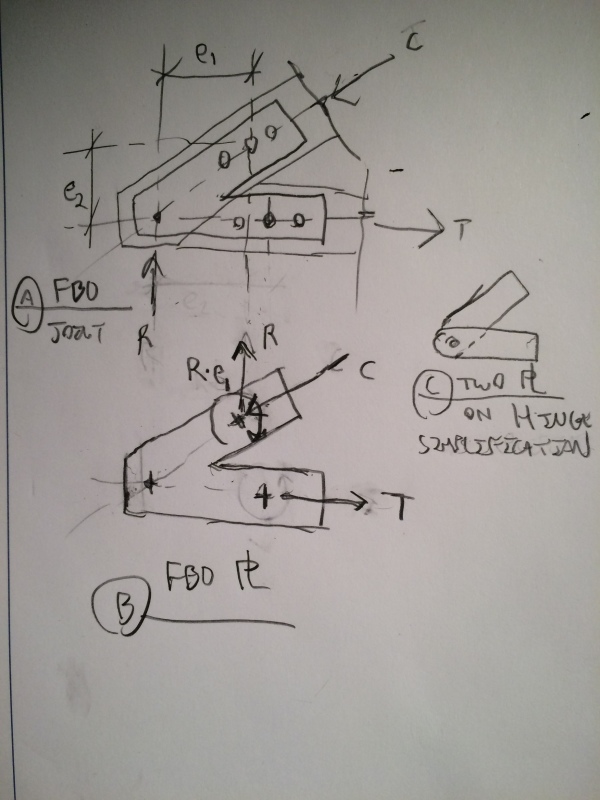jdgengineer
Structural
- Dec 1, 2011
- 748
I haven't done a lot of decorative bolted trusses before. I have a simple condition, that is essentially a rafter tie truss (decorative king post in the middle but not taking load), 6x8 top chord members connected to a 6x8 bottom chord member. The joint will consist of 1/4" plates each side of the truss members with 3/4" machine bolts.
I understand how to calculate the tension/compression forces in the bottom/top chords. What I am struggling with a little bit is the design of the bolted connection and free-body diagram of the 1/4" plates.
How do you typically go about calculating this joint? The bottom chord seems like all bolts would be loaded in parallel to grain loading. But the top chord, does it not need to resolve the thrust force from the bottom chord in perpendicular to grain loading? Or am I missing something? There seems like there is an eccentricty we would have to address. Although, I suppose you could locate bolts to avoid this.
I know this is a simple problem, not sure why I am struggling, but hoping for a little bit of guidance.
I understand how to calculate the tension/compression forces in the bottom/top chords. What I am struggling with a little bit is the design of the bolted connection and free-body diagram of the 1/4" plates.
How do you typically go about calculating this joint? The bottom chord seems like all bolts would be loaded in parallel to grain loading. But the top chord, does it not need to resolve the thrust force from the bottom chord in perpendicular to grain loading? Or am I missing something? There seems like there is an eccentricty we would have to address. Although, I suppose you could locate bolts to avoid this.
I know this is a simple problem, not sure why I am struggling, but hoping for a little bit of guidance.

